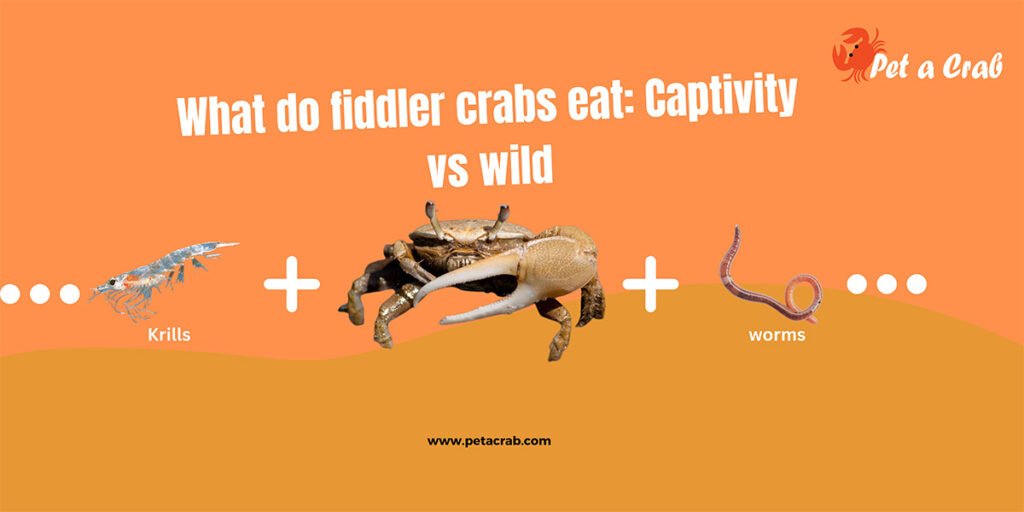After buying hermit crabs and petting those for a few days the crabs stopped moving for a few days and the situation became confusing which led us to questions like how do I tell if a hermit crab is dead? It mostly happens with inexperienced hermit crab owners. Handling and understanding the situation and behavior several times will make you confident about the situation.
Your hermit crab may not be dead, it is just stressed or scared or maybe it is molting. So be sure to check the symptoms before taking any action.
What is the sign of a dead hermit crab?
#Sniff – If a hermit crab dies, it will have an odor of rotten fish, which is a sign of decomposition. The fishy smell will come out of the tank and will be stronger day by day.
However, if it doesn’t smell and you think it is dead. To make sure, take the crab to your nose. If it smells anything then the crab is dead otherwise it is alive.
#Touch response – When hermit crabs stop moving, they close the mouth of the shell with their bigger claw which is expected. Pick it up and try to move the claw, gently not forcefully. There will be two situations.

One where it will respond with any kind of movement another is not responding meaning it will show no care about your touch and picking and they will just be like that. In both cases prefer they be alive.
#Hanging limbs – Trying to move the claw leads to another situation, where the crab will move unnaturally like it won’t move the parts of the body willingly meaning the limbs will be loose and hanging.
The same goes for out of the shell. If the hermit crab’s limbs are hanging out of its shell unnaturally, it could be a sign of distress or death.
Is my crab dead or molting?
If the crab doesn’t smell anything it indicates it is alive. Other reasons we talked about earlier. Though a dead and a molting hermit crab look the same, not moving. There are some major signs you will notice if you observe closely.
#Track movements – The crab may not seem to move but look closely and try to move it, you might notice very subtle movements or twitching, which are indications of molting.
However, the crab can stay buried for a long period like 2-3 weeks, then pick up it pointing where it is hidden, and see if it responds to movement if it doesn’t it may be dead. If it moves, the crab is in its molting period.
You may ask how a hermit crab can be alive and buried for this long without eating anything at all. This is where our doubts start and we become concern about the crabs’ health. They eat at night which you may not notice because hermit crabs are more active at night naturally. If you want to track the movements then use a UV black light. They won’t see the crab but you can see them.

#Empty shell – Many times hermit crabs leave the shell while molting. So if you see an empty shell that the crab used to wear, it may preparing itself for molting. But leaving the shell also indicates stress and a death sign. So do not conclude by only seeing the empty shell.
#Confused antennae – Their eyes will look confused before completing the molting process. The eyes may look pointing in another direction which means they don’t have full control of the body as they are leaving the exoskeleton and developing new.
#Pale skin color – During molting hermit crabs skin color will turn into dark and ashy colors. Their grimy exoskeleton color indicates the body is old enough and it is time to come up with a bright color.
Not moving not only indicates the molting hermit crab. It can also indicate problems like bad health, fear of predators, sudden movement, and stress. To know more about hermit crabs stopping movement.
This is a vulnerable period for hermit crabs. They may not move after molting for a few days and seem lethargic which is obvious because it is growing its shell with full energy. So give a proper diet, especially calcium-rich food. For several days, they may stay hidden because the smell of newly molted crabs attracts predators. Give the crab several shells of different sizes. There are many things to consider about shells be sure to check them out.
#FAQ
How do hermit crabs usually die?
Hermit crabs usually die from chlorinated tap water, iodized salt, not having access to saltwater, using substrates like calcium sand and peat moss, environmental stressors, health issues, not having a proper diet, and lack of care.
They may die from another reason too such as parasites and bacterial infection. With proper care, they can live up to 15 years and will die from old age.
Can a hermit crab die and not smell
No, a hermit crab can’t die without smelling. The odor smell won’t come at the beginning, by the time the smell will get stronger. If the crab doesn’t smell anything there is nothing to worry it is just molting.

Are dead hermit crabs stiff?
Absolutely, when hermit crabs pass away, they tend to get stiff. It’s kind of like when people die and their muscles stop doing their usual contracting and relaxing, which leads to the body becoming stiff. But again a molting crab also becomes stiff.
What happens when a hermit crab buries itself?
Hermit crabs dig in the substrate in fear of predators and other environmental stressors. In molting time they become weak that’s why they need to be buried for protection. Because it is their natural behavior they do it in captivity even though there’s nothing dangerous. They can do it even in normal days.
Why did my hermit crab die out of its shell?
Several reasons can be behind this such as something bothering in the shell like a small stone, the growth of bacteria, and not enough shell which leads to fighting, too big or too small shell, health issues, stressors, and improper care.


